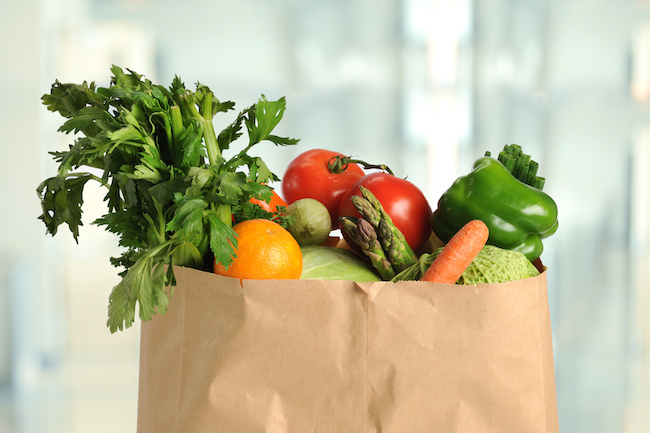When I think of the term “meal planning,” my head is filled with Pinterest images of perfectly stacked Tupperware, laden with your expertly portioned protein, colorful vegetables, and high-fiber starch. To be honest, this gives me huge amounts of anxiety, as this is certainly not what my version of meal planning looks like. I think this image has become ubiquitous with meal planning, and frankly, may turn some people off. If this is you, read on.
Today, I’m going to break down how I approach planning for efficiency, affordability, and of course, deliciously-cooked eats. Let me preface by pointing out this is a personal process. What works for me may not work for you, and that is absolutely okay. Whatever meal planning means to you (perhaps it is the perfectly stacked Tupperware) is fine by me. However, I believe the common thread in any approach is learning how to prioritize your meals, regardless of what the day or week throws at you. I think by having a plan (even a rough draft) empowers you to make the choices you want to make.
I believe most dietitians are slightly (or very) Type A. I’ll go out on a limb and say we like lists, and lots of them. Personally, there is nothing I love more than checking off a to-do. It is so deeply satisfying, and I take the same approach with food. I start this process on Sunday morning, usually prior to my farmers’ market run. I use my Notes function to map out the week (what I plan on eating/making), what I’ll need at the store, and what I need to accomplish each day. I’ve included a screenshot of a recent week. For context, this week was featured in the latest Dietitian Diary.
What is glaringly obvious is that I like to eat similar things (overnight oatmeal, kale salad, stews). This works for me, and again, maybe this wouldn’t work for you. But I digress….
I am not someone who likes to cook each night, but I do like mixing it up. On Sunday morning, I consult my arsenal of saved recipes and l pick one or two to make throughout the week. My usual sources are Pinterest, Bon Appetit, and the New York Times Cooking (a monthly subscription for $5 I highly recommend). Usually, these recipes are conducive to making a large portion and I frequently will double the quantity to have enough for the rest of the week, or even to freeze. Once I have chosen one or two recipes, I make a grocery list at the bottom of the note. Grocery shopping on Sunday can be intense with the crowds, so I try to go on the early side. I categorize my list by the store layout for maximum efficiency. This way, I am in-and-out within 20 minutes. You may be thinking I am neurotic, and I would agree.
If I’m home on a Sunday night, I usually make a large stew of sorts. This is warm and satisfying to me, and a nice way to have leftovers throughout the week. I also make my signature kale salad, which will last about three days. As Sunday and Monday nights are usually more mellow, these are my go-to cooking nights. The leftovers and/or my kale salads usually serve as work lunches, and my Monday night recipe can be mixed up throughout the week. A great example would be the Instant Pot chipotle shredded chicken recipe, which I always double for a larger portion. Like I said, I can eat similar things throughout the week, but I do need some degree of variety. If I do tacos on Monday night, I may do a taco bowl or taco salad on following nights. This week in particular, the weather was glorious and we grilled two nights in a row, and then I added the extra grilled chicken to my lunch salads.
For breakfast, I keep it very simple most days and rotate between some classics (overnight oatmeal, an oatmeal-based waffle or pancake, or egg tacos). When I make the overnight oats, I always make two portions to save time the following day (as well as brain power in planning). Like I mentioned in my diary, I always check in with myself and see what I actually want to eat. I may plan for a waffle on Thursday morning, but realize I’m actually craving something cold so I’ll whip up an “overnight oatmeal” instead. I am flexible with my plan, and change it throughout the week depending on what comes up and what my mood for food is. Ultimately, when I eat things that sound appealing to me, I find I am much more satisfied.
To summarize my approach to meal planning:
Breakfast – Keep it simple. I rotate between a few tried-and-true staples depending on my mood and timing. For early work days, I usually pack my overnight oatmeal. For my later days, I have time to make a pancake, waffle, or hot oats, but like I said, it depends on my what I feel like eating.
Lunch – Leftovers or kale salad plus some fixings. This usually depends on what I have from my Sunday night meal. If I want to do a salad, I keep a few things stocked in my fridge to keep it interesting. I love buying fresh hummus from the farmers’ market, or a ready-made lentil salad (my favorite is by La Cascada, sold at selective Whole Foods)to add a high-fiber starch and keep me more full.
Dinner – I usually follow a recipe on Sunday and Monday nights and then have this throughout the week, with a little spin for variety.
Like I said, this process is personal. Perhaps what you’re doing works for you and/or your family and that is fantastic! Or, if meal planning/cooking is a new routine for you, I encourage you to experiment and see what works. Ultimately, I believe it’s all about empowering yourself to make the healthy choices you want to make. Stock your refrigerator with things you like, and start saving recipes you find appealing. Over time, this will become your norm and perhaps it won’t seem so daunting. For more tips, don’t hesitate to talk to your dietitian, or visit our Enara blog for recipe inspiration.



